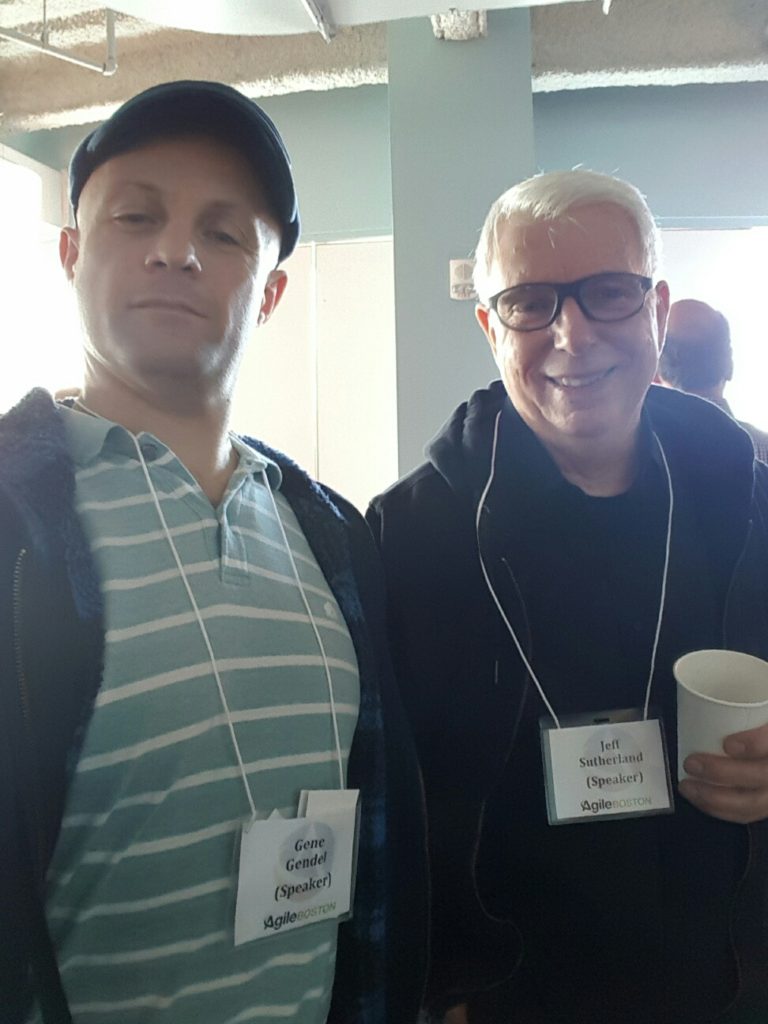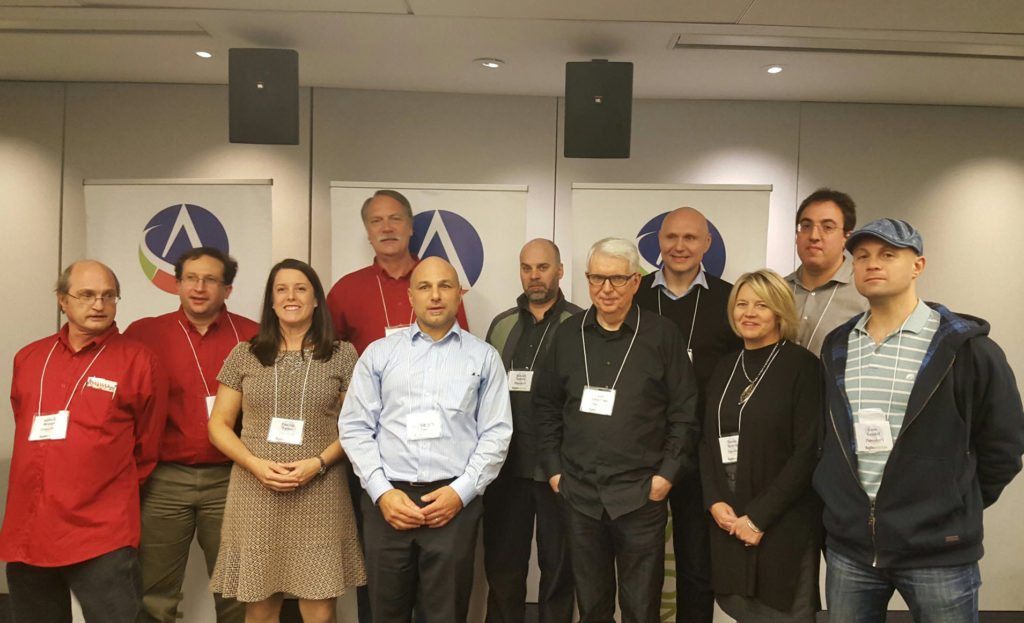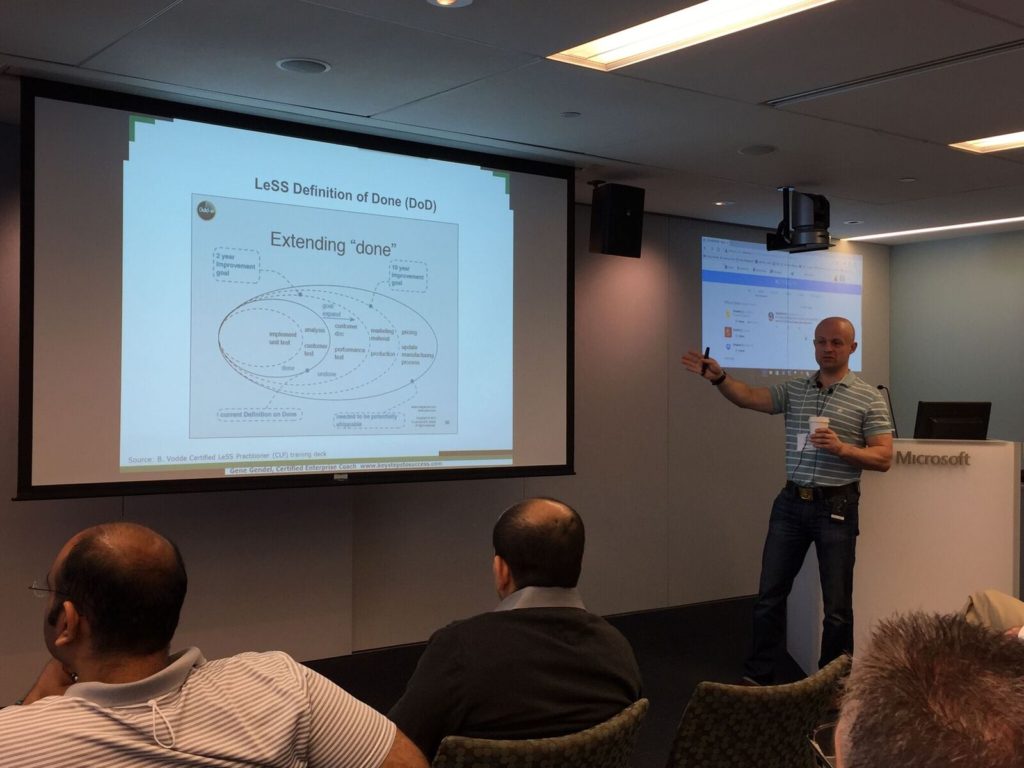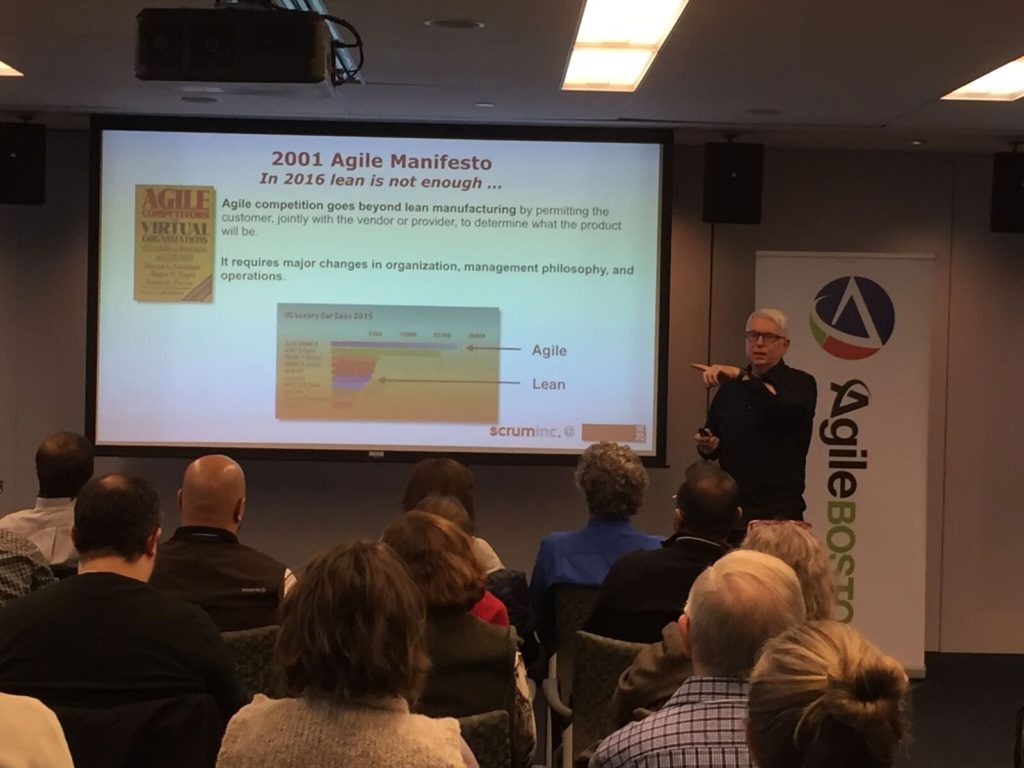On Tuesday November 22, 2016 Agile Boston celebrated its 8th Anniversary, by organizing Annual Give Thanks For Scrum event. The main theme of the event was: Scrum – A Foundational Element of Major Agile Scaling Frameworks.
During the event people learned from regional experts about how Scrum is at the heart of major Agile scaling frameworks like Scrum @ Scale (from Scruminc.), Nexus (from Scrum.org), SAFe and LeSS. Attendees also heard from regional executives who presented how successfully their organizations have scaled Scrum and the lessons they have learned along the way.
Event Speakers
 Jeff Sutherland |
 David West |
 Gene Gendel |
 Daniel Mezick |
 Yuval Yeret |
 Tammy Sparrow |
 Rirchard Gratton |
 Patricia Taylor |
Below are Top-5 take away points from each speaker:
LeSS presentation, by Gene Gendel
- LeSS is NOT!: many teams doing their own Scrum OR “safe Heaven” for existing organizational dysfunctions OR and attempt to “scale” Scrum to match existing organizational complexity
- LeSS provides clear distinction between the two types of relationships that involve Scrum Team(s) and Business: Clarification (from users, customers, SMEs) vs. Prioritization (from Product Owner)
- Geographic distribution in Scrum that keeps team members together (even though it may separate individual teams that work on the same product) is still not as harmful as separating members of the same team
- Component Teams are caused by existing organizational silos and , subsequently, lead to Local Optimization (that merely offers Role Security to certain people), at expense of System Optimization
- Frequently made assumption that the role of conventional Project Manager and the role of Scrum Master are the same – is a mistake. These two roles are very different: they engage with teams completely differently and their behaviors are not the same. Project Manager – coordinates and takes full responsibility for deliverable. Scrum Master – facilitates, while the whole team is responsible for deliverable.
Scrum @ Scale, by Jeff Sutherland
- In 2016, lean alone is not sufficient enough. Agile competition goes way beyond lean manufacturing. It requires major changes in organization, management philosophy and operations. Agile Transformations require Senior Leadership transform first. Managers must become Leaders.
- Agile & Scrum can and should go much further than software development. They may touch all organizational domains
- Different companies have different needs for improved agility, e.g. Large Defense Contractor, mid-way software company, “Agile Native” company
- Strategic Objectives determine Agile Approach. But you have to descale organization first, in order to scale scrum
- FrAgile (“Shu” state) = CEO does not have agile mindset. Translation layer that sits between FrAgile layer and Waterfall layer (e.g. PMO), provides insulation and must be ultimately removed to get high performance
Nexus, by David West
Scrum is the most popular way teams are approaching Agile – About 90% of Agile teams are using Scrum. Because of this it forms the basis of all the scaling approaches, even home grown (VersionOne survey 75% using a Scrum of Scrum approach to scale).
- Scaling where you add more systems, processes and organizational ‘stuff’ will not make you agile. Agility is the opposite with a strong focus on empowered teams working in a environment that support the three pillars of inspection, adaption via transparency.
- Nexus is a light weight exoskeleton for Scrum helping teams have a consistent approach to scaling their product development. Nexus is not an approach to Agile IT, instead focusing on how you can have 3-9 teams working together on a backlog with a large number of dependencies.
- Nexus is still Scrum, but adding an additional role of Nexus Integration Team, events of Nexus Sprint planning, Nexus Daily Scrum, Nexus Sprint Review, Nexus Sprint Retrospective, and Refine, and Artifacts of the Nexus Sprint Backlog and Nexus Goal.
- If you have bad Scrum, Nexus will just highlight the bad – good Scrum makes scaling work.
SAFe, by Yuval Yeret and Daniel Mezick
- We need to scale Scrum DNA, not just Scrum practices
- “You can have things your way and push it if want, but this door is pretty stubborn”. – “PUSH” approach does not work well with systems. You have a better chance to succeed if you “PULL”
- What do you get when you scale an Agile Theater (a.k.a. Waterfall)? You get SAFe Theater (Starring the Managers-Only PI Planning, The Command & Control RTE, w/ special guest – Waterfall Thinking)
- Scrum is a foundational piece of SAFe’s Team Level and is best seen on Essential SAFe 4.0 schema
- In order to SAFely scale agile, you must use Real/Genuine Scrum DNA + Lean/Agile Principles + Leadership
Another Kodak moment with Jeff Sutherland






